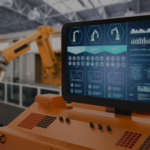In the era of globalization, manufacturing businesses find themselves intricately woven into the fabric of the global economy. The impact of this interconnectedness is profound, touching every aspect of the manufacturing industry, from supply chains to market competition.
This article explores the multifaceted effects of globalization on various manufacturing industries, global companies and businesses, shedding light on key keywords such as global trade, supply chains, economic development, and the evolving dynamics in apparel industry in both developed countries and developing countries.
The rise of emerging markets is a prominent hallmark of globalization’s impact on manufacturing. Developing nations, equipped with skilled labor pools and competitive advantages, have become significant players, altering the dynamics of global competition. This has prompted manufacturing businesses to reevaluate their strategies to maintain a competitive edge in this new landscape.
The intensified global competition has fostered innovation and efficiency, as businesses strive to navigate the complexities of diverse labor markets, trade policies, and the ever-changing demands of consumers worldwide. The competition is not merely about producing goods but about navigating a dynamic global environment where adaptability and strategic foresight are essential.
While globalization presents manufacturers with unprecedented opportunities, it also introduces challenges that demand a careful balancing act. Trade barriers, geopolitical uncertainties, and the need for agile supply chain management are factors that require businesses to adopt flexible and adaptive strategies.
The influx of digital technologies and the era of Industry 4.0 add another layer of complexity, urging manufacturing businesses to embrace innovation and digitization to stay competitive. The impact of globalization on manufacturing is a multifaceted story where businesses must navigate a delicate balance between seizing opportunities and mitigating risks in an interconnected and dynamic global landscape.
In essence, globalization has redefined the very essence of manufacturing, demanding a paradigm shift in how businesses conceive, and produce goods, and deliver their products to a global audience.
Global Trade and Supply Chain Dynamics

At the heart of the impact of globalization on manufacturing businesses lies the transformation of global trade and supply chains. The interconnected nature of the global economy has given rise to intricate supply networks that span across borders.
Manufacturing companies are now seamlessly integrated into global value chains, with components produced in different countries before converging into final goods and products. This interconnectedness not only enhances efficiency but also exposes businesses to both opportunities and challenges, as disruptions in one part of the whole world trade, can reverberate throughout the entire supply chain.
Global Value Chains and the Rise of Emerging Markets
Global value chains have redefined the geography of manufacturing, creating an interconnected web where components traverse borders to converge into final products. This phenomenon has been particularly transformative for developing countries, as trade liberalization and the opening of global markets have propelled them into prominence.
Emerging markets, armed with skilled labor and competitive advantages, are now significant players in new aspects of the manufacturing industry. This has led to the decentralization of manufacturing hubs and a reevaluation of corporate strategies to tap into the potential offered by diverse labor markets and supply chain nodes around the world.
Trade Liberalization, Corporate Strategy, and Economic Development
Trade liberalization, marked by the removal of trade barriers and the facilitation of foreign trade, has been a catalyst for economic development. Manufacturing companies, in crafting their corporate strategies, must navigate the changing landscape of global competition and foreign markets.
This involves optimizing supply chains for efficiency, understanding the nuances of international trade theory and economics, and strategically positioning themselves to harness the benefits of free trade. For developed countries, maintaining a competitive advantage often involves leveraging skilled labor and investing in new technologies to foster productivity growth.
Digital Technologies and the Transformation of Supply Chains
The advent of digital technologies has ushered in a new era of supply chain management, offering low-cost access to information and communication across the globe. Manufacturing companies are leveraging these technologies to optimize production processes, enhance productivity, and reduce costs.
The integration of digital technologies has also facilitated real-time data analysis, enabling businesses to make informed decisions that resonate in markets around the world. This digital transformation is not only a key aspect of contemporary business models but also a strategic imperative for maintaining competitiveness in the global marketplace.
Challenges and Opportunities Amidst Global Competition
Global competition, while fostering innovation and efficiency, presents challenges for manufacturing businesses. The shifting demand in global markets, the fluctuation of labor costs, and the impact of trade barriers are factors that necessitate a proactive and adaptive approach.
Multinational companies, operating across diverse regions, must contend with business cycles, varying factor prices, and the continuous evolution of world trade policies. Understanding the intricacies of these challenges is integral to crafting resilient business models that can thrive in the ever-changing dynamics of the global economy.
The Rise of Emerging Markets and Global Competition
Globalization has ushered in a new era of competition, with manufacturing businesses facing challenges from emerging markets and global companies. Developing countries with skilled labor pools and competitive cost structures have become major players in the manufacturing industry.
As a result, advanced economies are reevaluating their business models to maintain a competitive advantage. Global competition has become a driving force for innovation and efficiency, pushing manufacturing companies to adapt and leverage digital technologies to enhance productivity and reduce costs.
Skilled Labor and Competitive Advantage
One of the driving forces behind the ascent of emerging markets in manufacturing is the availability of skilled labor. Developing nations have invested significantly in education and skill development, creating a workforce capable of undertaking sophisticated manufacturing processes.
This skilled labor pool often comes at a lower cost compared to their counterparts in advanced economies, providing a competitive advantage. As a result, emerging markets are increasingly becoming hubs for industries that require technical expertise, from electronics to precision engineering.
Technological Advancements and Leapfrogging
Technological advancements have played a pivotal role in propelling emerging markets into the global manufacturing arena. Rather than following a linear trajectory, some developing nations have leapfrogged certain stages of technological development. The adoption of digital technologies, automation, and smart manufacturing practices has enabled these nations to rapidly advance their manufacturing capabilities.
This technological leapfrogging skill abundant countries not only enhances efficiency of manufacturing’s share but also positions emerging markets other developing countries as formidable competitors to other developing countries, capable of producing goods with high levels of sophistication.
Strategic Economic Policies and Trade Liberalization
The rise of emerging markets is also closely tied to strategic economic policies and a commitment to trade liberalization. Many developing nations have embraced policies that encourage foreign investment, facilitate international trade, and create business-friendly environments.
Trade liberalization in advanced countries, marked by the removal of trade barriers, has allowed these nations to integrate into global value chains seamlessly. As a result, emerging markets have become attractive destinations for multinational companies seeking to optimize production, lower costs, and access new consumer markets.
Impact on Established Manufacturing Players
The ascent of emerging markets has profound implications for established manufacturing players, particularly those in advanced economies. Global competition has intensified, prompting established companies to reassess their business models, enhance innovation, and invest in advanced technologies to maintain a competitive edge.
This shift has led to a more dynamic and interconnected global marketplace, where businesses must continually adapt to stay ahead in the face of emerging market competition.
Fostering a More Interconnected Global Marketplace
The rise of emerging markets has not only fueled global competition but has also fostered a more interconnected global marketplace. Supply chains for manufactured goods now span continents, with components manufactured in different regions before converging into final products.
This interconnectedness requires a strategic approach to supply chain management, where companies must navigate diverse local markets’, trade policies, and cultural nuances. The result is a global manufacturing ecosystem that demands agility, adaptability, and a keen understanding of the ever-changing dynamics of emerging market competition.
Trade Liberalization and Economic Growth

Trade liberalization, marked by the removal of trade barriers, has been a catalyst for economic growth in both developed and developing countries. Manufacturing industries have reaped the benefits of increased access to foreign markets, leading to faster growth and expanded export production.
The integration of digital technologies has further facilitated low-cost access to global markets, enabling manufacturing businesses to connect with consumers around the world. While this has undoubtedly driven economic development, it also necessitates strategic considerations as businesses navigate diverse labor markets, trade policies, and market demands.
The Changing Landscape of Labor Markets
Globalization has reshaped labor markets within the manufacturing industry. Skill-intensive manufacturing processes have become a focal point for developed countries, leveraging their skilled labor forces to maintain a competitive edge. In contrast, labor-intensive processes often find a home in developing countries where unskilled labor is abundant.
This dynamic has not only led to shifts in manufacturing employment but has also raised questions about the equitable distribution of economic benefits from manufacturing employment and the impact manufacturing employment has on wage levels in different parts of the world market.
Automation and the Rise of Skill-Intensive Jobs: One of the key drivers of change in the labor markets is the increasing integration of automation and artificial intelligence. While automation has led to the displacement of some routine and manual jobs, it has concurrently given rise to a demand for more skill-intensive roles.
he need for workers with advanced technical and analytical skills has surged, reflecting a shift toward occupations that involve complex problem-solving, creativity, and adaptability. As technology continues to advance, the workforce must adapt by acquiring and enhancing these in-demand skills to remain competitive in the evolving job market.
The Gig Economy and Flexible Work Arrangements: The emergence of the gig economy has introduced a new dimension to the labor markets, altering traditional employment structures. Freelancers, independent contractors, and gig workers now contribute significantly to the overall workforce.
This shift towards flexible work arrangements has implications for job security real wages, benefits, and the traditional employer-employee relationship. While the gig economy offers individuals greater autonomy and flexibility, it also raises questions about workers’ rights, access to benefits, and the need for adaptable labor policies that can safeguard the interests of workers in non-traditional employment models.
Globalization, Remote Work, and Access to Talent: The advent of advanced communication technologies and the acceleration of remote work trends, especially in the aftermath of global events like the COVID-19 pandemic, have further transformed labor markets. Companies now have increased access to a global talent pool, enabling them to source expertise and skills from anywhere in the world.
This globalization of talent introduces opportunities for diverse perspectives and specialized skills but also poses challenges related to cross-cultural collaboration, time zone differences, and the need for effective remote work infrastructure.
Policy Responses and the Future of Work: Governments and policymakers play a crucial role in shaping the response to the changing landscape of labor markets. Educational systems must align with the evolving needs of industries, emphasizing the development of critical thinking, creativity, and technological literacy.
Labor policies need to adapt to the gig economy, ensuring fair compensation, social protections, and avenues for career advancement for non-traditional workers. Additionally, there is a growing need for policies that address the potential impact of automation on certain job sectors, offering retraining programs for less skilled workers, and support for workers transitioning to new roles.
Navigating the Global Marketplace
Manufacturing businesses are now participants in a vast global marketplace, where local, regional, and international factors converge. Understanding the intricacies of international business cycles, international economics, foreign and trade policy, international economics, and international economics and trade theories has become essential for crafting effective corporate strategies.
Whether entering new markets, optimizing supply chains, or adapting to fluctuating demand, businesses must consider the broader context of globalization to make informed decisions that align with the ever-evolving dynamics of the global economy.
Understanding Cultural Nuances and Market Dynamics: One of the fundamental challenges of the global marketplace is the diversity of cultures and market dynamics. Successful navigation requires a deep understanding of local nuances, preferences, and business practices.
Companies must invest in cultural intelligence, recognizing that what works in one market may not necessarily translate to success elsewhere. Tailoring products, services, and marketing strategies to resonate with local sensibilities demonstrates a commitment to engaging authentically with diverse consumer bases.
Building Agile and Adaptable Supply Chains: Global market dynamics often involve intricate supply chains that span multiple countries and continents. Businesses must cultivate agility and adaptability in their supply chain strategies to respond to unforeseen disruptions, geopolitical shifts, and fluctuations in demand.
Leveraging advanced technologies for real-time tracking, predictive analytics, and efficient logistics becomes imperative for ensuring a seamless and responsive supply chain. This adaptability not only minimizes risks but also positions companies to capitalize on emerging opportunities in the global marketplace.
Embracing Technology for Global Connectivity: In an era where digital connectivity knows no bounds, leveraging technology is paramount for success in the global marketplace. Digital platforms facilitate communication, collaboration, and market access on a global scale. E-commerce, social media, and digital marketing play pivotal roles in reaching international audiences and building brand presence. Embracing innovative technologies, such as artificial intelligence and data analytics, further enhances decision-making capabilities and provides valuable insights into diverse market trends.
Compliance with International Regulations and Standards: The global marketplace comes with a complex web of international regulations and standards that businesses must navigate to ensure compliance and build trust. Understanding trade agreements, customs regulations, and industry-specific standards is crucial for seamless operations across borders.
Establishing robust compliance protocols not only mitigates legal risks but also fosters a positive reputation, reinforcing the credibility of businesses in the eyes of consumers, partners, and regulatory bodies.
Cultivating a Global Mindset and Cross-Cultural Competence: Navigating the global marketplace requires individuals within organizations to cultivate a global mindset and cross-cultural competence. This involves fostering an organizational culture that values diversity, encourages open communication, and embraces differing perspectives.
Training programs that promote cross-cultural understanding and effective communication equip employees with the skills necessary to navigate diverse markets and build fruitful international collaborations.
In conclusion, the impact of globalization on manufacturing businesses is a nuanced and evolving story. As companies navigate the complexities of global and trade policy, supply chains, and market competition, they must embrace flexibility, innovation, and strategic foresight. The globalization of the manufacturing industries is not just a trend; it is a fundamental restructuring of industry dynamics that requires a holistic understanding and proactive adaptation to thrive in the interconnected world of business.





